What's Going Around Wind Turbines: Turbulent Vortices

I am researching how wind flows behind wind turbines by analyzing experimental and numerical data. The experimental data has been collected around the turbine that is pictured at right, and the numerical model is based on this turbine.
I’m specifically analyzing the structure and evolution of the vortices that are created at the blade tips. The vortices are caused by areas of low pressure around the turbine. Turbines’ blades rotate because the aerodynamic shape of the blades guides incoming wind into creating a pressure difference that, in turn, drives the blades. Another difference in pressure is due to the fact that the blades block wind, so behind the blade there are fewer air molecules and thus, there is a lower pressure. Objects feel forced to move to lower pressures. Both the blades and the wind are forced into the lower pressure. Some wind wraps around the blades in order to get to the low pressure area.
A vortex forms where the wind curls because the low pressure applies a centripetal force — like how a hurricane is a vortex where wind wraps around the hurricane’s low-pressure eye. Vorticity quantifies how much the fluid rotates around a region. In math terms, the vorticity is the curl of the wind velocity. Strong vortices are created at the blade tips because here the wind can radially bypass the blade, which provides the path of least resistance in the pursuit of lower pressure. This vortex is then pushed downstream by the wind, away from the blades’ low pressure region; the wind continues to curl due to a law of angular momentum conservation. The tip vortices are major sources of turbulence that damage downstream turbines. Consequentially, tip vortex research can lead to improvements in the longevity of turbines in wind farms.
Continue reading What's Going Around Wind Turbines: Turbulent Vortices
Green Molecules and Green Chemistry Labs, Part II
Summer snuck up behind me. Before I knew it, high school graduation was here, school was out, and with it, most of the students and teachers who normally populate the Bard Queens hallways I’ve roamed and reacquainted myself with.
One of the first things I was told to expect about the PSF project was to be ready for surprises, and to be ready to take things in stride. Even so, when the end of June approached, I panicked. I knew I couldn’t work in the lab without a supervisor, and knew that Julia would be leaving for China come the last week of school. I hadn’t begun working in the lab until the start of June, since working here required permission from the NYC DOE (bureaucracy has a funny way of stifling creativity). School duties (proctoring, chaperoning, etc.) kept Julia and Cindy busy for a few days, and migraine attacks kept me from the lab once they were back and ready to go. After working in the lab for two weeks, and a cumulative one-week absence, I found myself with a notebook full of ideas but no time left to act them out. I performed what I could and got ready to say goodbye, disappointed that June had come and gone with the wind.
Right before she left, Julia mentioned that Cindy, the lab teaching assistant, was willing to work with me over the summer. Still, she admitted that this rested on its acceptance by the powers that be. I gave her a gift, hugged her, said goodbye, and thanked her for all she had done for me. I waited. Then, ecstasy! Cindy said she would be in the lab, and that I was welcome to pass by anytime.
Continue reading Green Molecules and Green Chemistry Labs, Part II
Chasing Bluegrass: Festival Time
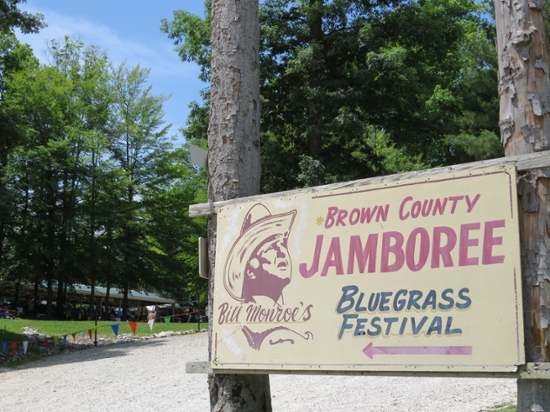
The first two festivals I attend this summer are a study in contrasts. The first, the Bill Monroe Bean Blossom Bluegrass Festival, is a hyper-traditional “Mecca of Bluegrass.” The countryside surrounding Bean Blossom, in Brown County, Indiana, is filled with rolling hills, big forests, and small towns. A permanent wooden stage sits in the middle of the music park, and an American flag hangs behind bands playing on the stage. People set their lawn chairs in the field in front of the stage at the start of the ten-day festival and leave them there for the entire festival; since people wouldn’t watch every act, you could take a seat in somebody else’s lawn chair until the owners came back.
Around the stage, dirt roads with names like “Ralph Stanley Road” and “Jimmy Martin Drive” circle through the campground, which is mostly dominated by trailers and RVs. Tent camping is mostly in a back corner of the campground, in a part of the park that Bill Monroe once christened “hippy hill.” There’s a pond on the property, and mules and goats are kept back behind the pond.
Continue reading Chasing Bluegrass: Festival Time
Interview with John Hopson
Madeline Wagar ’16, Assistant Editor with Works & Days, interviewed John Hopson ’97, User Research Lead at Bungie Studios, a video game company based in Washington state.
Describe a typical day in your work.
There aren’t really typical days. Game development is a very cyclic industry. The early stages of coming up with ideas are very different from the final run up to ship a game. There is a whole cycle to development. Right now, we’re in the final crunch to ship Destiny (an intricate, interactive first-person shooter). We have people coming in to play the game in lab multiple times a week, and we are running data analysis on the statistics we gather every day. We just finished public alpha testing, so we had 500,000 people plugged in playing the game from home. We have lots of data from that. We surveyed several thousand participants to get their subjective opinions, and we will be analyzing that.
Continue reading Interview with John Hopson
Off Quad Rule: Part 7
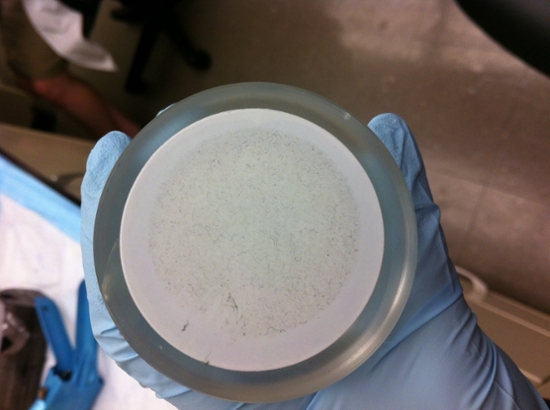
Alecha
The picture to the right is a PSA to remind people to always use protection and filter. Gross, am I right? This week has been filled with me fiddling and peddling around the lab, sometimes in the dark due to the power outage that plagued the research labs and hospital facilities. There is a lab evaluation next week so I won’t have as much time to work on my project and write out as many quick notes and passages to you. It seems that when you need everything to work perfectly it breaks down and throws a tantrum. The HPLC and GC-MS, gas chromatography mass spec, machines are having quite a fit. It’s like the power outage woke up a bunch of cranky toddlers, and believe me, dear reader, they are not crib happy.
Continue reading Off Quad Rule: Part 7
Reed Winter Externship Reflections 14: Number twenty-eight, The Union, Julia Selker
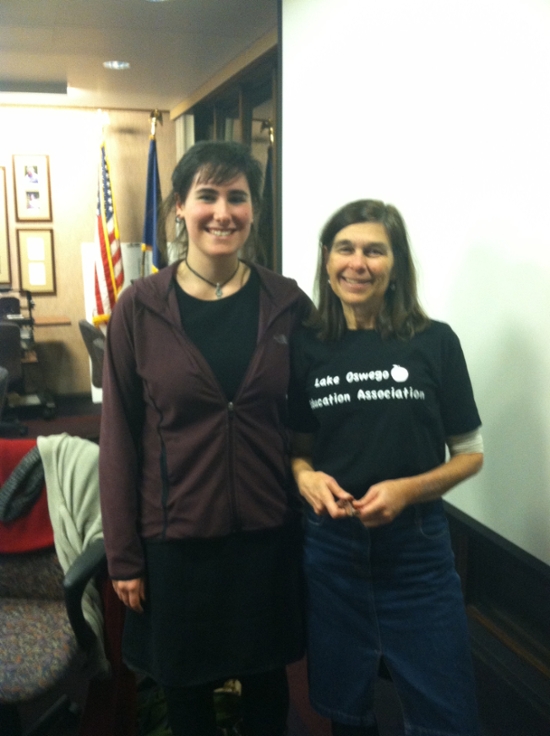
The unthinking college student might believe—having spent so much time in high school—that there is nothing more to learn there. Your intrepid author was not so quick to dismiss and got an inside look at the other side of the story.
It is early afternoon, and the overcast sky hangs heavily outside of the classroom window. A lone freshman stands with the whiteboard behind him, his slouching silhouette accentuated by the blinding glare of the projector. With an air of teenage detachment but the heart of a true citizen, he presents his research on Chris Christie’s scandal.
His classmates gravely weigh in on the controversy, their young minds heavy with the consequences of this political retaliation. The discussion is expertly guided by a figure that stands with a notepad at the back of the room.
This is Laura Paxson, bold and charismatic high school teacher. Her demeanor is stoic in the face of the tragedy that befell New Jersey bridge-crossers as their commutes were indefinitely delayed, but this is nothing compared to the questions that she will face when the bell tolls.
The students file out of the classroom jovially, excited to see their friends and family. Paxson’s work, however, is far from over. The transition is swift: one minute a history teacher, the next the president of the Lake Oswego teacher’s union.
There is no time to waste. Equipped with a heavy binder Paxson jumps in a sporty red car to hit the open road. Soothing but energetic tunes accompany her for the eight-minute journey to Oregon Education Association Headquarters. The Executive Board is gathering.
The Board is assembled in a conference room, munching pita chips as the anticipation builds. The small talk is engaging; these are not only colleagues but friends. Then, with authority and efficiency, Paxson calls the meeting to order. They look over the minutes from the last meeting and move to approve them. They quickly determine the state of the union’s budget, and then get down to business.
A teacher’s union has many projects, varying broadly in size and scope. Much of the meeting is spent discussing political action and how to mobilize the teachers to participate in lobbying activities that could improve the state of the education system. A ballot measure to decrease class sizes will need their support, for instance. They also plan to attend a convention for the improvement of education, where they will have conversations with politicians to gauge the candidates' dedication to the school system and influence their policy choices.
Suddenly the scope narrows: a single teacher was placed in an uncomfortable and difficult situation because the principal of the school did not prevent it. The tone in the room becomes grave as the executive board weighs their options for giving support to the teacher and making sure that the principal knows that such behavior is not acceptable. The teacher’s contract is referenced frequently, where their right to protection is stated clearly.
Another issue they faced was the possibility of a strike in Medford, because the local teachers’ contract is being violated. The Medford union asked for gestures of support, in the form of small quantities of money. This question will be brought up later in a larger meeting with representatives from all of the schools. There they will decide to send $100 to the Medford union as a symbol of solidarity.
The meeting draws to a close, but the President’s day is not yet done. Returning to the high school in her spicy red car, she presents the school board with a thank you card signed by the executive board of the union. It expresses their appreciation for the school board.
The differences between the school board meeting and the executive board meeting are stark. The school board discusses questions brought by community members, including the sheriff who wants a law that will allow him greater power in instances of underage drinking. The board discusses this seriously, but always with the winding tone of a philosophical question. The executive board, on the other hand, dealt with their many questions energetically, with one eye on the bureaucracy and the other on the people involved. The school board wondered at what they could do to abstractly “help the children” but the union’s executive board worked on actions that they could take to improve the individual well being of teachers, as well as the fate of the entire school system, with intense personal dedication.
Continue reading Reed Winter Externship Reflections 14: Number twenty-eight, The Union, Julia Selker
The Siegel Salmon Restoration Internship: Part 2
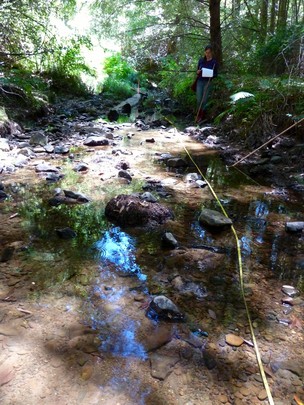
Figure 1. In-stream measurements at Russell Brook. Although picturesque, the stream is not very hospitable for rearing and migrating salmon.
The large woody debris project forges ahead here at the Mendocino Land Trust. Two weeks ago, I went into the stream at Russell Brook along with Doug (Big River Program manager) and Nicolet (Trails & Stewardship Coordinator). We walked the length of the project area (about a half mile) and took some basic stream measurements (Figure 1) that quantitatively describe the area and determine the baseline level of viable salmon habitat. Spoiler alert: it’s pretty low. Pools are infrequent and shallow, meaning that salmon don’t have good rearing habitat, and cannot rest during upstream migration. Water temperature is high, which poses a problem for these cold-water inhabitants. However, only a couple hundred feet up the stream, where large woody debris has already been installed, deep pools swell over the tops of waders (a bittersweet discovery).
The California Conservation Corps (CCC) has now begun the arduous process of hauling and anchoring huge logs in the stream according to detailed plans (Figure 2). I’ll get to see the crews in action in a couple weeks while conducting an inventory of the large woody debris that is in place.
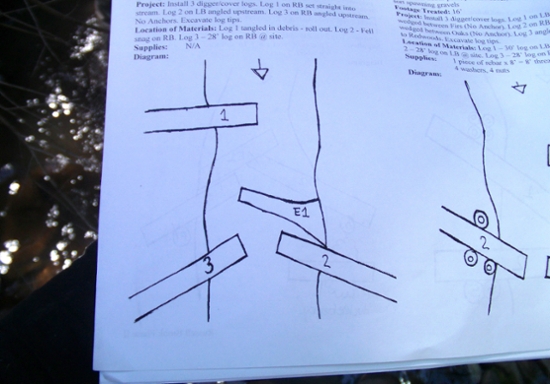 Figure 2: Large woody debris plans developed by the California Conservation Corps.
Figure 2: Large woody debris plans developed by the California Conservation Corps.
Continue reading The Siegel Salmon Restoration Internship: Part 2
Interview with simon max hill '01
Madeline Wagar ’16, Assistant Editor with Works & Days, interviewed Simon Max Hill '01, a self-employed Casting Director working in Portland, OR.
Tell me a bit about what you do.
I have a small casting company that does casting of all kinds. We don’t cast theater, but we do commercial, film, T.V., print, any kind of advertising or entertainment. Say you are a producer and you have a project that requires an actor or model. You come to us and say, “I need a guy who looks like a college basketball player. He'll have some lines, but not a lot, but he must be able to play basketball. What can you get?” And then we have a conversation about payment. In a way, we are a human resource company. For a very specific kind of human resource.
Continue reading Interview with simon max hill '01
Landing Your Dream Job Right Out of College: Persistence Pays
This story was originally posted on Jessica's blog at Medium.com.
This is a story about how I got my dream job after graduating from college with a BA in English. I’m hoping that it will give both ideas and some realism to recent grads and other job seekers.
I graduated from Reed College with a degree in English and decided not to enter a PhD program. I loved our local paper Willamette Week, but I didn’t think I had the skills to work there as a reporter. I decided that I would sell advertising so I could have a cool job at a paper that I loved and be part of the scene. They often advertised for advertising sales people, so I figured it wouldn’t be hard.
I sent in an application and got no response. The paper used to run dating ads attached to a voice mail service before Internet dating took off. I designed a “Woman Seeking Job” ad and sent it over. No response. Then I cold called the hiring manager and he spoke to me briefly about my lack of experience.
Continue reading Landing Your Dream Job Right Out of College: Persistence Pays
Phase 1
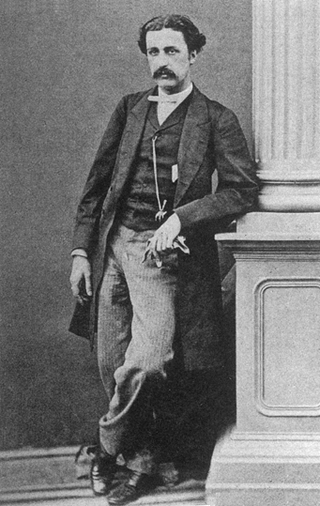
Robert Swinhoe
John Young '15, environmental sciences/history, was awarded a President's Summer Fellowship to "travel to and collect consular records from the British National Archives, the Royal Geographical Society, and the Natural History Museum in London, and then return to Reed in order to analyze and further chart the collecting habits and practice of natural history of the ornithologist Robert Swinhoe (1836-1877)."
Professor Douglas Fix tells me that one should have an excellent idea of what collections an archive holds long before one arrives at the archive’s reading room. A visit to collect documents, a perhaps seemingly pedestrian task, requires a large measure of pre-visit prep work.
More than I anticipated.
Continue reading Phase 1
Off Quad Rule: Part 6
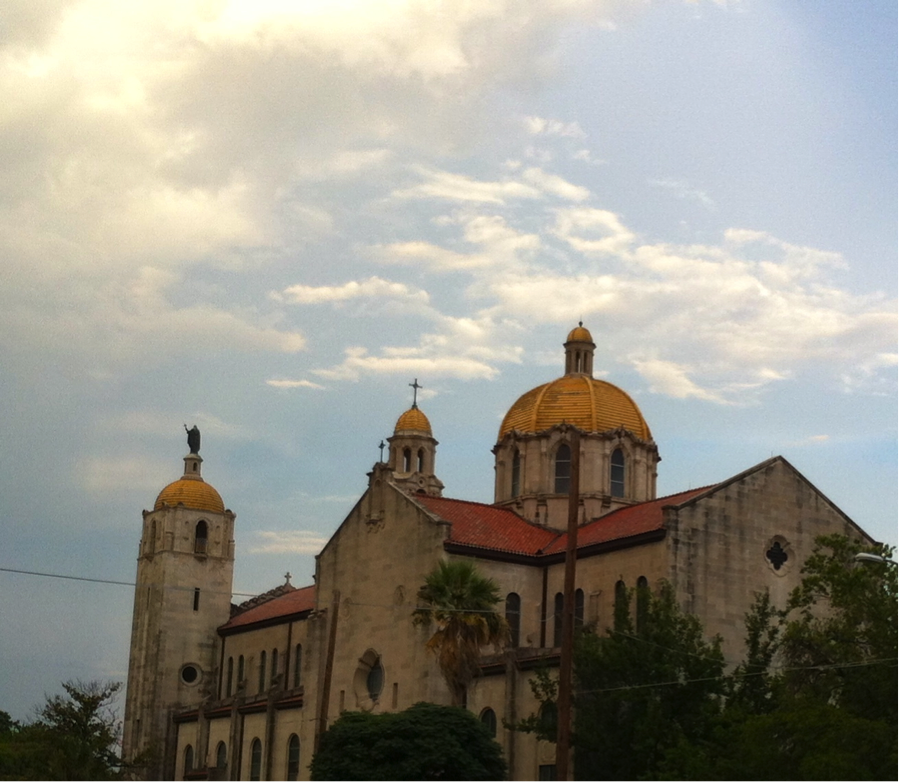
Handkäse mit Musik
Pictured here is La Pequeña Flora, The Little Flower. It’s a church tucked away in a residential area that I happened upon. There are tons of old religious structures in San Antonio, I thought I would share my favorite one with you guys. Touring this was better than seeing the Alamo in my opinion. This week was quite eventful, with a human brain dissection and the chemicals for the ELISA kit I’m working on coming in. I also want to give a huge thank you to all of you sending me letters, the mailman here now knows me by my name due to the abnormal volume of mail I receive that isn’t just bills. As I finish off the final steps in the newest protocol (fingers-crossed) I wish the rest of you much luck with the projects and endeavors you’re tackling this summer. Let’s go Deutschland.
Continue reading Off Quad Rule: Part 6
PSF project with Campus Within Walls
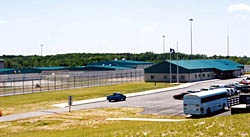
I glance at myself in the mirror, and anxiously scrutinize my outfit. Long khaki pants and a plain, loose-fitting black shirt. It’s my first day of school, and the dress code is quite strict. No jeans. Nothing too revealing, nothing too form-fitting. No dresses, no skirts. Long pants. Sleeved shirts. No blue tops. The possible ways I could violate the code seem endless.
I glance down. My shoes may be a problem. Only closed toed shoes are allowed, and all I brought with me are sandals and running shoes. I wear the running shoes as they are the pair with the only chance of passing inspection, but they may prove to be too informal.
I grab my bag. It contains my wallet and cell phone, though I know already these items will be staying in the car. I will bring only my photo ID into the school building.
Continue reading PSF project with Campus Within Walls
Off Quad Rule: Part 5
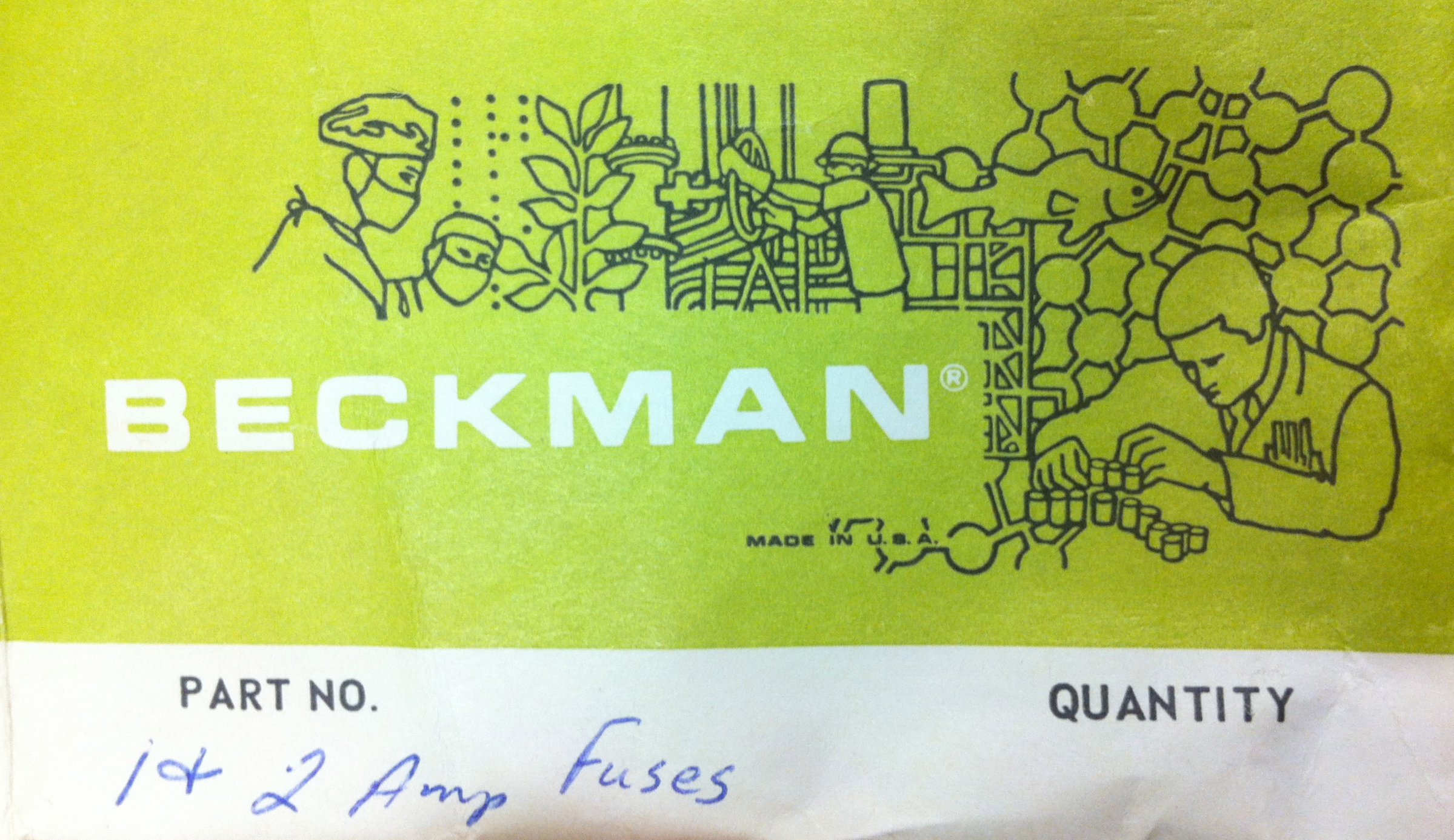
Mezes & Dakos
Happy Fourth! I hope you get to eat some good grilled food, dance among fireflies, and have your fair share of fireworks that aren’t your neighbors annoying second-rate cacophony of explosions tonight. Despite the first new curve analysis, which is promising (R2 = 0.998 for the lymphocyte protein curve, that is, what we think is in the samples, is in the samples), the THC project is currently on hold. There are high hopes of the new sample sets working with the ELISA enzyme assay kit, however due to unfortunate circumstances not all the necessary materials have arrived for round two (after all not every company can do -20°C overnight shipping like Sigma-Aldrich – it’s rather sketchy how that kind of transport it legal).
Spetsofai
Continue reading Off Quad Rule: Part 5
White Net Under a Red Flag: A First Look at one of China's Most Popular Sports
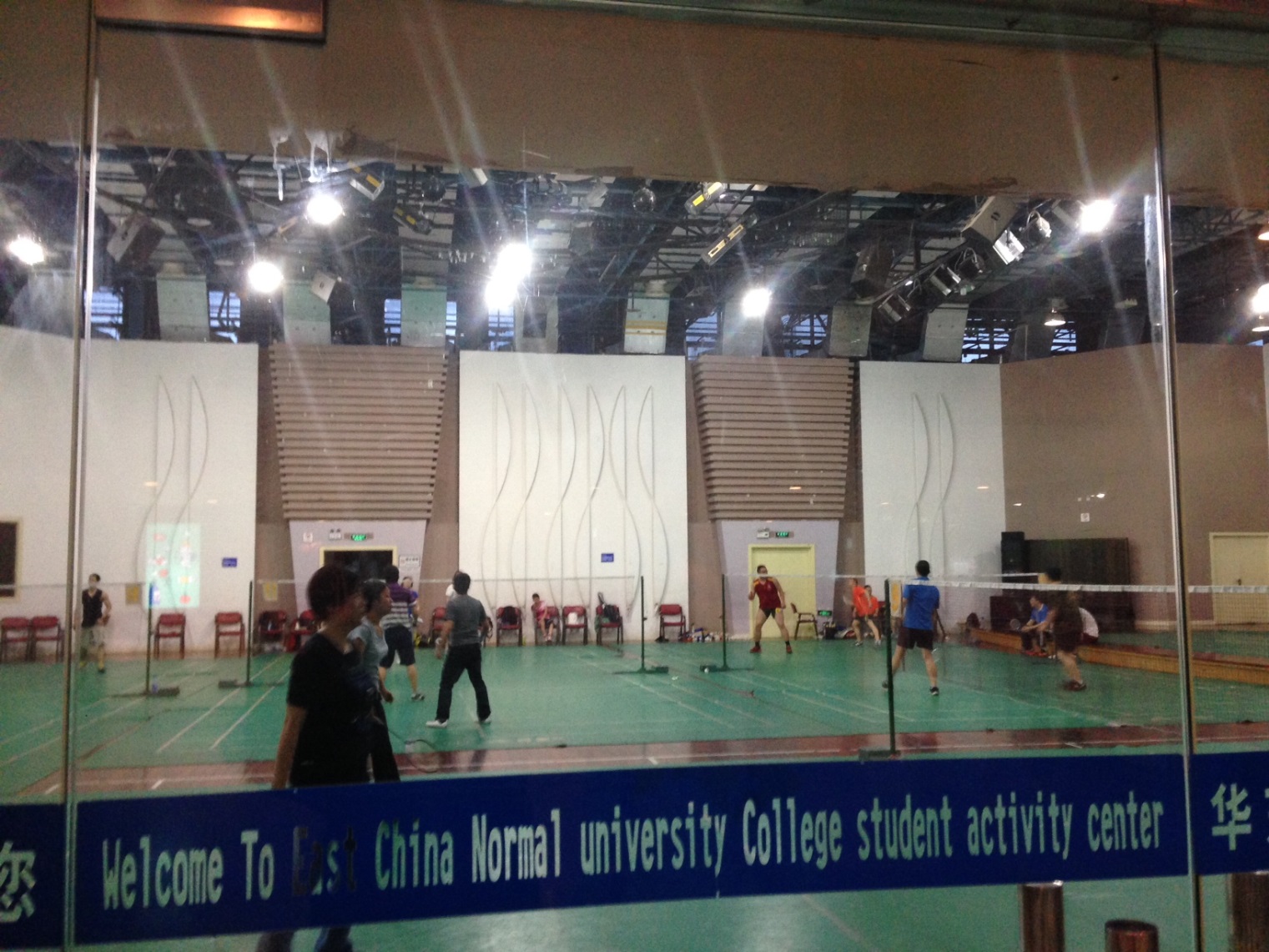
If you have been watching the World Cup, or keep tabs on any other sport, it should come as no surprise that sports play a very meaningful roles in our lives in the 21st century. Here is a PSF project about a sport you may have never thought seriously about, but which is ubiquitous across Asia and especially in China.
"Everybody is crazy about badminton here," my new friend says as we sit along side East China Normal University's badminton courts. His name is Varun and he is an Indian graduate student who started playing badminton when he matriculated to ECNU two years ago. Varun plays with the Chinese regulars at the gym almost every day, and knows most everyone here. "I never played in India, although it's quite popular there," he tells me. "But now," he says with a smile on his face, "I'm addicted."
What Varun said about ECNU's badminton craze is not hard to see when we look out in front of us. It is Wednesday late afternoon and most of the gym's eight courts are full. And this isn't counting the five courts in the adjacent gym, or the school’s small indoor stadium, which features eight courts. The stadium isn't always open, and the gym isn’t always as full as it is now, but I can put it this way: I have never come here and not seen at least a handful of people playing. At peak times it can be hard to find an open court at all—players need to pay for their court time and join a queue.
Off Quad Rule: Part 4
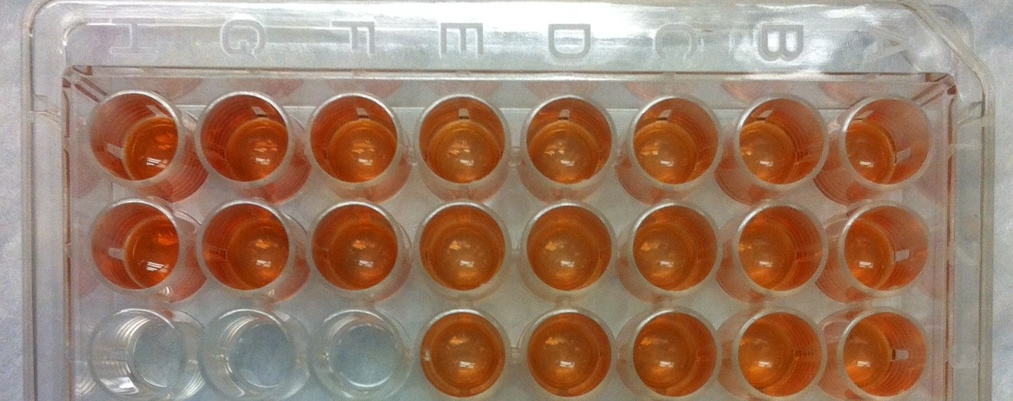
Mestouf
Another day another dollar, a new week a new protocol. I got to explore a revised protocol for harvesting lymphocytes from blood, which was as much fun as it was frustrating. I also got to learn a little about Rapamycin and its antibiotic properties – it happens to change the color of muscle from the typical fleshy red to a still very natural goldfish orange when applied to open wounds. I recently found a good centrifuge companion to fill the time when I actually have 30 minutes to spare during my busy day; Donna Tartt’s The Goldfinch has been a good read so far.
Continue reading Off Quad Rule: Part 4
Off Quad Rule: Part 3
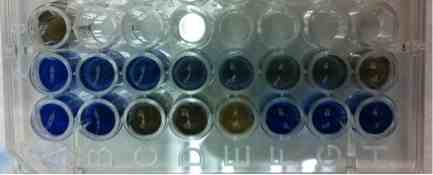
Suimono
This week started out great, with the Spurs winning on Sunday beating the Heat. Just when I thought my coworkers couldn’t be any happier or nicer, I am pleasantly surprised. The lab looks cleaner, the glassware is shining, and the hallways smell like victory in place of the familiar urine, iron, and formaldehyde-blended scents. This week I’ve been back and forth between two lab benches on opposite sides of the building, working on the preliminary data that measures the activity of cannabinoid receptors, specifically CB1 and CB2, in the collected lymphocytes.
Gyoza
Continue reading Off Quad Rule: Part 3
Beauty is a little girl with seaweed on her lips, life is a treasure on the beach
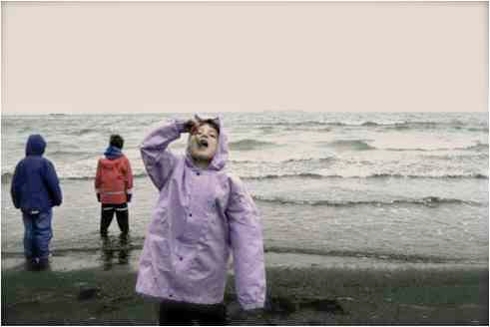
“Do you like it?” I asked, as little Elaine eagerly took the sea lettuce from my outstretched hand and popped it in her mouth. She chewed thoughtfully, opening her mouth so I could see her teeth every time she bit down, fully exploring the odd new texture. Then she swallowed and a serene expression came over her sea-sprayed face: “Miss Leila,” she said, as salt water dripped from her eyelashes, “I just want to stay on this beach forever and eat seaweed.” Elaine hugged herself within her purple rain jacket and turned to look out at the wind-whipped ocean. It was a picture of wildness and beauty, and it made me feel really alive—kind of like the feeling you get in the moment you decide to embrace the rain and just get soaked. I couldn’t have wiped the grin off my face if I wanted to as I turned to look at the other children playing along the beach and picked up a new handful of sea lettuce. I swirled it in the surf to rinse it of sand and walked down towards the little rain-dancing rain-boots with my handful of salt-soaked offerings.
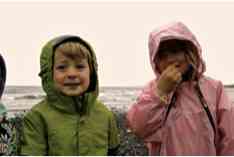
Officially my job title at the Kodiak National Wildlife Refuge is “Park Ranger,” which is both a really poor sum-up of my actual position and kind of a misnomer anyways when you work for the Fish and Wildlife Service, with is quite different from state or National Parks. When I describe my job to other people I tell them I am the Youth Conservation Corps crew leader at the Kodiak National Wildlife Refuge (KNWR), and that I lead a team of four high school students in projects both in town and out in the field that benefit the Refuge and the Kodiak community and educate the high schoolers about the National Wildlife Refuge system and the many things that KNWR does to fulfill its mission to conserve and protect the Kodiak Brown Bears and their beautiful archipelago habitat. Which is all grand and well, but when I really think about what this summer experience is meaning to me, three words come to mind with which I would describe myself: teacher, learner, explorer.
Harvesting Energy from Fluids: The Beginning of a PSF Summer
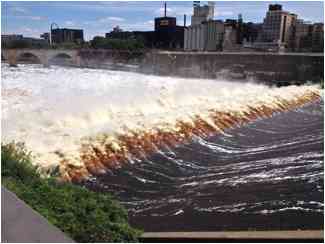
My experience studying wind energy at St. Anthony Falls Laboratory began in early June. In between the end of school and the start of the laboratory experience, I spent two weeks on a WWOOF farm in Gresham, Oregon. Here, I shoveled, weeded, and relocated a variety of farm supplies. This manual labor felt refreshing and productive after spending a year completing mental labor. The intimacy that I had with nature on the farm was very meaningful. The best part, however, was the interesting philosophy of the farm. Everyone shares work as well as resources, and no money is exchanged. The farmers also advocate working slowly in order to thoroughly live and learn. They even practice a five-hour workday as opposed to the standard eight hours. This was a fascinating demonstration of how to elude stress and promote cooperation and love. This farm was both idealistic and idyllic.
After the farm, I visited the beautiful Oregon desert, and then I flew to Minneapolis, Minnesota. I settled into my summer residence - a house inhabited by Macalester College students. I found this inexpensive room through a classmate at Reed, for there is a sizable large crossover between the Reed and the Macalester communities.
I then visited the laboratory – and it is amazing. It is located where the Mississippi River runs through downtown Minneapolis. While the urban skyline is beautiful, it pales in comparison to the natural scenery. The lab is located below a magnificent 50-foot waterfall and next to roaring rapids. This setting dramatically demonstrates the power of fluids. The lab was built below a waterfall so that gravity could be harnessed in bringing the water from above the falls to the experimental facilities below the falls. As a fluid mechanics laboratory, it uses a lot of water.
Continue reading Harvesting Energy from Fluids: The Beginning of a PSF Summer
Green Molecules and Green Chemistry Labs: Johnny Mendoza, PSF Summer Experience
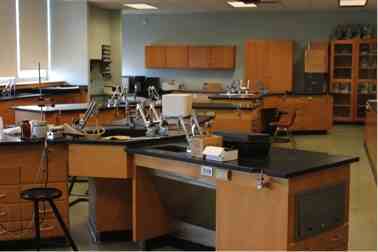
The last time I had been in this chemistry lab was 2 years ago. Back then, I was just getting my feet wet in the field of organic chemistry with the aid and guidance of my professor, Julia Robinson-Surry (’06). Now, I’m working with Julia and the lab teaching assistant, Cindy Liu, to dive deep into the field of green chemistry. With their help, I plan on revamping the current organic chemistry lab curriculum at Bard High School Early College Queens, my old high-school, in an attempt to make it more environmentally-friendly. In addition, I hope to learn about the role and synthesis of green catalysts in organic chemistry, specifically Julia’s work with Fe-TAMLs, a group of oxidation catalysts that has proven useful in environmental cleanup efforts.
Bard Queens is a small school. With 600 students on two floors, it didn’t always feel that way, but the average class size is 20 students. It is also a new school, at only 6 years of age. This comes with some inherent difficulties. For example, the chemistry lab at Bard is not as well endowed as Reed’s. For one thing, there are only two fume hoods, one of which is not working. The only way these chemistry students can characterize their product is through infrared spectroscopy (IR) or physical analysis (i.e. matter state, melting point, boiling point, chemical assays, etc.). In most organic chemistry labs, nuclear magnetic resonance spectroscopy (NMR) and gas chromatography–mass spectrometry (GC-MS) are standard analytical methods. Our project must keep these limitations in mind, and design labs that can be preformed mostly on the bench-tops, while avoiding volatile/strong-smelling chemicals and synthesizing products that can be differentiated readily from any reagents used.
Bard Queens also employs a relatively unique curriculum, where the first two years of school are dedicated to fulfilling high-school requirements and the last two years dedicated to taking college courses with the goal of graduating with an associate’s degree. The students taking organic chemistry here are generally 2 years younger than those at other colleges. The lab periods are also shorter (2 hours, 40 mins vs. 4 hours at Reed). One of our goals will be to make these labs accessible yet rigorous, worthwhile yet not time-consuming, and above all, interesting.
Off Quad Rule: Part 2

Tapas
The protein curve, calibration curve, and initial lymphocyte concentration results from last week came back and were excellent, or “acceptable” in research terms. A little more explanation (sans math, I won’t bore you): The protein curve is a plot that measures the concentration of protein loaded into a well of the plate vs. the optical density associated with it. This is determined by incubating the loaded well plates using a dye reagent, which will produce a distinct pigmentation for each protein concentration in the individual wells. Using colorimetry, protein concentration can be quantified by detecting differences in tint and give results based on a specific wavelength. The same goes for the calibration curve, however the purpose for this is to make sure the ELISA Assay kit works, and to make sure the person operating it knows how to properly use it. The initial lymphocyte concentration results are done to get an estimate of the typical concentration of lymphocytes in the blood samples, this is run in tandem – so to say – with the protein curve. This determines the lymphocyte concentrations relative to the known quantities, and depending on the dilution factors (10x and 100x in this case), also gives suggestions about whether or not to dilute samples. That was quite filling; I hope you’re still a little peckish after all that.
Paella y Sangria
Continue reading Off Quad Rule: Part 2

